Mary Keltner
Valeska Hinton Center
Peoria, IL District #150
2019
During November our class focused on family traditions as part of a unit on Thanksgiving. The children spent an entire week learning about pies. This weeklong study concluded with a Parent Day that allowed the children to bake three different types of pies with their parents (i.e., sweet potato, Dutch apple, and banana pudding). The children and their parents enjoyed this activity so much that we decided to explore the project of baking.
This project was conducted by a mixed-age group of 20 children at a full-day general education preschool class.
Phase 1: Beginning the Project
During the beginning investigation of pie, the children got to taste different pies, and we made a graph so they could vote on the type of pie they liked best. They voted by placing their picture under a picture of their preferred pie. This activity provided an opportunity to talk with the children about more and less, and to count how many votes/pictures were under each of the pies that they tasted.
To introduce the class to our project, and as a way of establishing what they knew about baking, we brought in a wide variety of baking utensils. These materials were placed on the carpet, and we observed the children interacting with them and each other. We discovered that a great deal of pretend baking took place. The children also learned to sort the materials by items that could go in an oven and items that could not.
After a couple of days of observing the children and encouraging them to ask questions and explain to us what they knew about baking, we recorded their base knowledge on a tree map (i.e., a map that classifies). As the children provided information, we would ask which branch of the tree their idea should go under. Information was added to it continually over the course of the project (see Figure 1). We also made separate maps for specific topic areas. One tree map (see Figure 1), a vertical visual outline of topics showed the children knew a lot about some aspects of baking and very little about others.
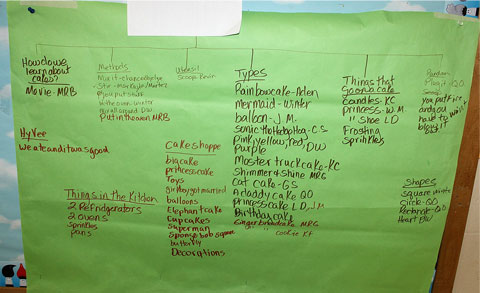
The children came up with many initial questions. For example, one of the most interesting questions that was offered during this exploration was, “Can you charge a mixer?” See Figure 2 for their initial questions and the answers they discovered after site visits and other investigative activities.
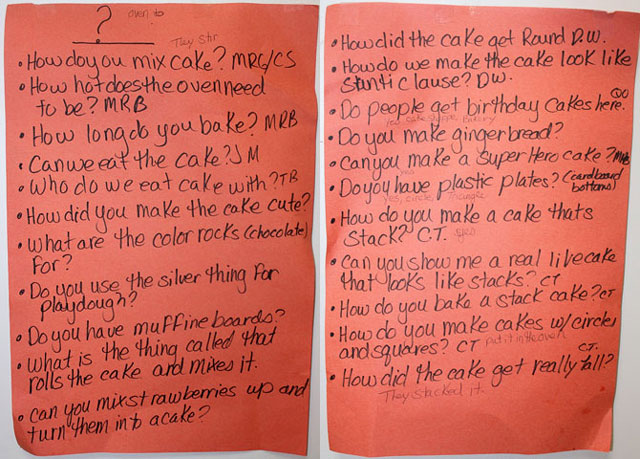
Phase 2: Developing the Project
During this project we took a field trip to increase children’s understanding of baking. In December we made a field trip to two sites: The Cake Shoppe, a small cake decorating store, and the Hy-Vee grocery store. Prior to the trip, the children generated many questions for the bakers.
After baking several different items (see Figure 3), we decided to spend some time helping the children focus on the concept of ingredients and the process with which a cake is mixed and baked. We used the stories of Don’t Wake Up Momma by Eileen Christelow and Froggy Bakes a Cake by Jonathan London to help the children learn what ingredients go into a cake. The children talked about each cake that was made by the characters in the story. Next they made a brace map, a horizontal visual outline, of the ingredients that they wanted to put in the cake they were going to make from scratch (see Figure 4). This provided children with an opportunity to think about part/whole relationships.
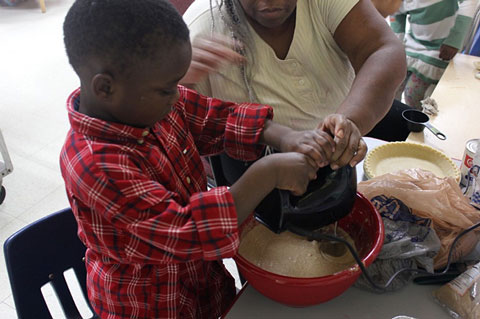
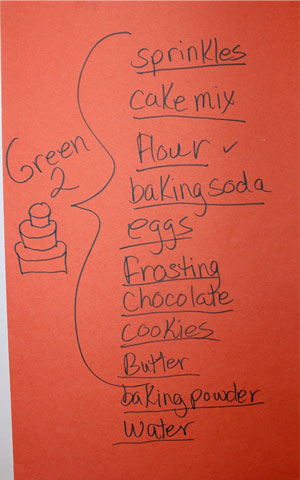
The children’s discussions about baking continued, and they became very interested in birthday parties, perhaps because Grandma Sandy’s birthday was coming up. Grandma Sandy is a much beloved volunteer in the classroom who spends countless hours reading to children, helping with small group projects, encouraging parents, and facilitating a variety of activities for the children. I took advantage of this opportunity to allow the children to plan a surprise birthday party for her, and the process provided the children with many opportunities to work on and demonstrate many important concepts and skills.
We began this part of the project by making another tree map to classify or put everything they knew about planning a birthday party into topics/groups, which revealed many ideas for decorations and party activities. After listing everything they knew, they narrowed down their choices for the food, decorations, cake, frosting, and what they were going to do at the party (see Figure 5). The children formed lines to make a human graph to vote for the shape of the cake.
Over time they worked with parent volunteers to mix the cakes. We also invited the school occupational and physical therapists to join them while they frosted a cake. This provided an opportunity for children to demonstrate the muscles they were building as they used various piping tips (see Figures 6 and 7). As the project developed, they decorated the classroom and voted on what gift to give Grandma Sandy, and they created the invitations that were sent home and to various school staff (see Figure 8). The entire party was planned and put together by the children!
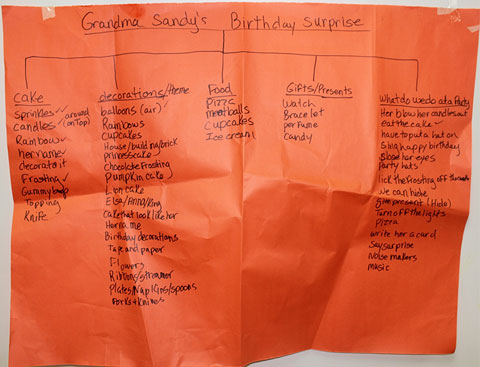
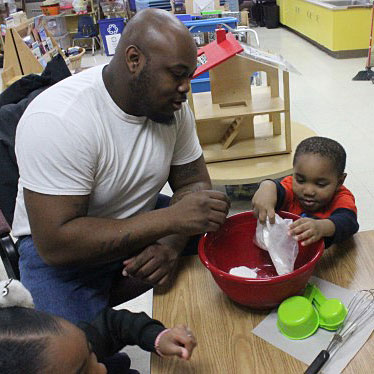
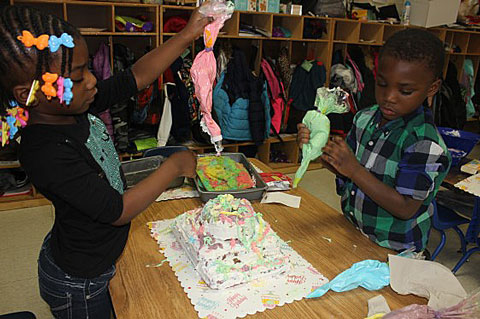
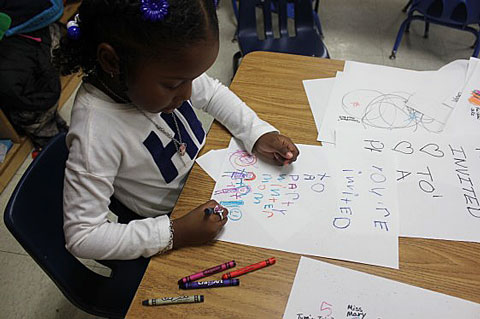
Phase 3: Concluding the Project
The Baking Project culminated with Grandma Sandy’s surprise birthday party (see Figure 9).
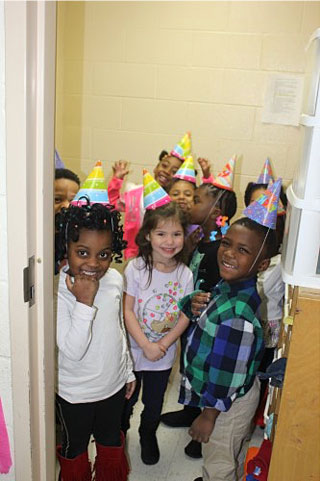
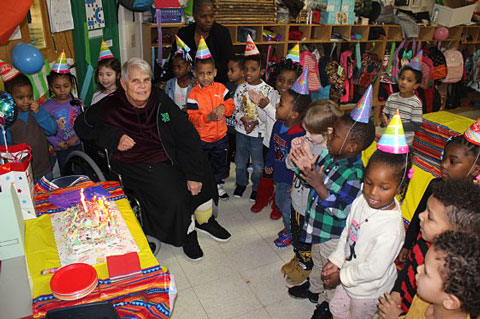
Teacher Reflection
Baking was phenomenal project for the children. For generations, cooking in the kitchen or over a fire has been at the center of family life. Selecting this topic made it possible for parents and children to relate to one another through previous experiences. The Baking Project provided the opportunity for parents to freely become involved in the work of the class because the topic was so familiar and nonthreatening. It provided the opportunity for parents to share happy memories with their children and to build new ones. This project was an excellent vehicle for providing a cross-curricular approach to learning both at school and home. The children were able to demonstrate the gains they made in their understanding of math, science, and literacy.
Note: Another cooking project that was conducted in collaboration with two other classrooms emerged from the Baking Project. The children in the other two classrooms had disabilities.
IEL Resources
- Project Example: The Sharing Pizza Project

